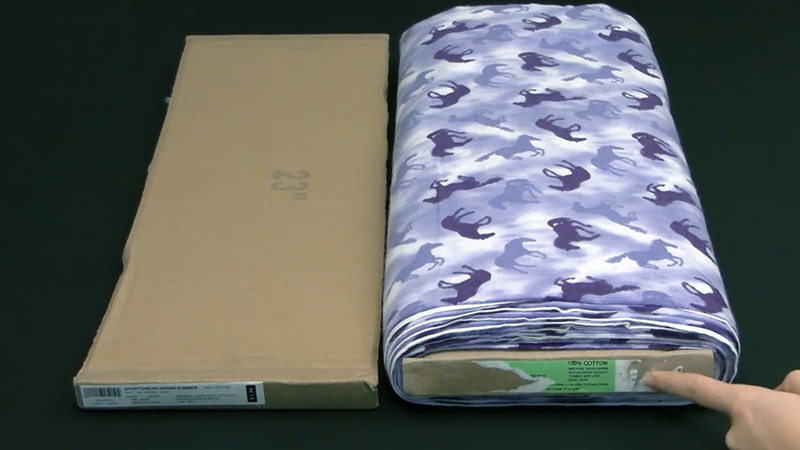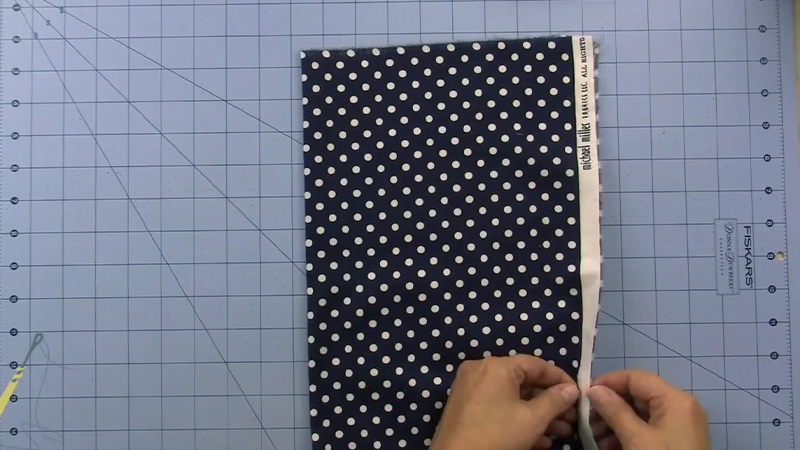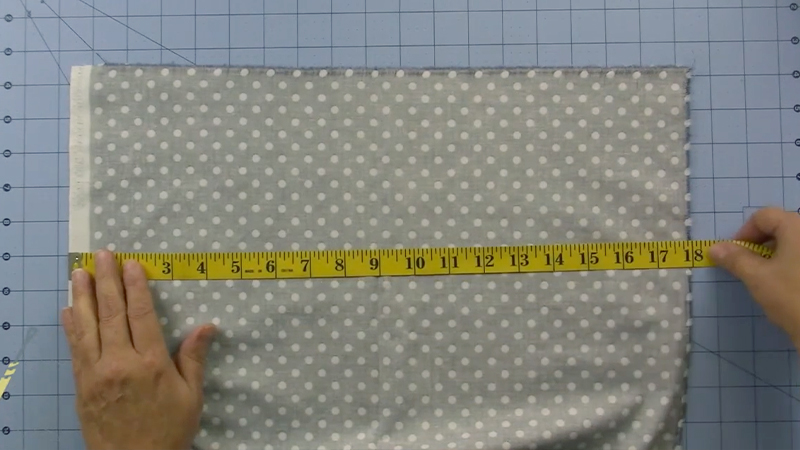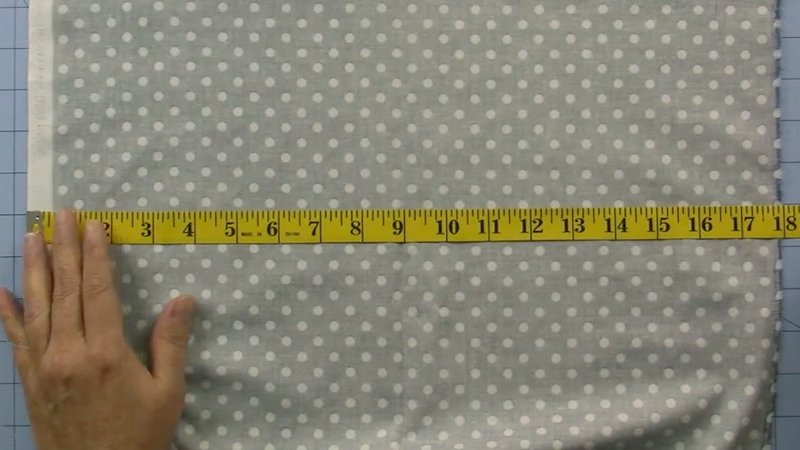The standard width of a fabric bolt is a critical factor in the world of textiles, influencing how fabric is selected, cut, and utilized in various projects.
Ranging typically between 45 to 60 inches, this measurement forms the foundation for crafting garments, accessories, and home décor.
Understanding these standard widths is paramount for sewers, quilters, and artisans, as it directly impacts the feasibility of patterns and the overall efficiency of fabric usage.
Manufacturers adhere to these industry norms, providing consistent options for a multitude of creative endeavors.
This introductory knowledge is essential for anyone venturing into the realm of sewing and crafting, ensuring successful and precise project execution.

What Is the Standard Width of Fabric Bolt?
The standard width of a fabric bolt refers to the typical measurement across the width of a roll of fabric material when it is manufactured and sold by the yard or meter.
This standard width can vary depending on the type of fabric, the manufacturer, and the region in which it is produced, but there are some common width measurements that are widely accepted in the textile industry.
The most common standard widths for fabric bolts are:
45 inches (114 cm)
Fabrics with a 45-inch width are incredibly versatile and widely used in the textile industry.
They are a popular choice for a wide array of sewing and crafting projects. This width is particularly well-suited for creating garments like blouses, skirts, and dresses.
Additionally, it’s ideal for smaller home decor items such as pillowcases and tablecloths. Quilters also favor fabrics of this width for their projects due to its manageable size and ease of handling.
54 inches (137 cm)
Fabrics with a 54-inch width are favored for applications that involve larger surfaces, making them a go-to choice for upholstery and drapery. This extra width provides more coverage, making it especially suitable for furniture, curtains, and other home furnishing items.
The 54-inch width gives curtains a fuller and more luxurious appearance, making it a popular choice for window treatments.
60 inches (152 cm)
A 60-inch width is commonly found in knit fabrics, known for their stretch and comfort. Fabrics of this width are typically used in the production of t-shirts, dresses, and other clothing items.
The extra width allows for seamless construction of garments, making it particularly beneficial for creating full-circle skirts or wide sleeves. This width provides flexibility in garment design, allowing for more intricate and flowing patterns.
72 inches (183 cm) or wider
Wider fabrics, starting from 72 inches and beyond, are designed for specialized applications.
These fabrics are often used in settings where substantial coverage or durability is required. They find extensive use in theater productions, serving as backdrops for elaborate sets.
Additionally, they are preferred in venues like auditoriums or event spaces where large curtains are needed. In industrial settings, these wide fabrics, often made of heavy-duty canvas, are employed for applications like tents or awnings.
Fabric by the bolt
When fabric is sold by the bolt, it is typically a wholesale quantity, containing multiple yards or meters of fabric rolled together.
Bolts can vary widely in width based on the type of fabric and the manufacturer’s specifications.This purchasing option is particularly popular for businesses, schools, or individuals working on large-scale projects.
It offers convenience and cost savings, especially for those who anticipate needing a substantial amount of fabric.
Factors Affecting Fabric Bolt Width

The width of a fabric bolt is a critical factor to consider when selecting materials for a sewing or crafting project.
It determines how efficiently the fabric can be used and influences the outcome of the final product. Several factors can influence the standard width of a fabric bolt.
Here are some of the key considerations:
Type of Fabric
The type of fabric plays a significant role in determining its standard width. Natural fibers like cotton and linen are often produced in widths that cater to a range of sewing and crafting needs.
On the other hand, specialty fabrics, such as upholstery material or industrial-grade textiles, may come in wider widths to meet specific application requirements.
Manufacturing Process
The method used to manufacture the fabric can influence its width. Some fabrics are woven or knitted in wider looms or machines, resulting in broader widths. Conversely, fabrics produced in smaller looms may have narrower standard widths.
Intended Use
The purpose for which the fabric is intended is a critical factor. Fabrics used for apparel, like clothing and accessories, often have narrower widths to accommodate garment patterns efficiently.
Conversely, fabrics destined for larger applications like upholstery or drapery tend to come in wider widths to cover larger surfaces effectively.
Industry Standards
Over time, specific standard widths have been established as industry norms. These standards have been adopted by manufacturers and retailers to provide consistency in the availability of fabric options.
For example, the 45-inch width is a widely accepted standard for a range of versatile fabrics.
Market Demand
Consumer demand also plays a role in determining the standard width of fabric bolts.
Fabrics that are frequently used in a particular width range will be produced accordingly to meet market needs. This is particularly evident in the case of widely used fabrics like cotton blends and knits.
Cost-Efficiency
The width of a fabric bolt can impact production costs. Wider bolts may require specialized machinery or additional resources during the manufacturing process.
Therefore, the choice of width is also influenced by the economic considerations of the textile industry.
Specialized Applications
Fabrics tailored for specific industries or applications, such as theater productions, automotive upholstery, or industrial purposes, often come in non-standard widths.
These specialized fabrics are designed to meet the unique requirements of their intended use.
Implications of Standard Width of Fabric Bolt

The standard width of a fabric bolt holds significant importance in the textile industry and for those who work with fabrics for various projects.
Here are some key points highlighting the significance of the standard width of fabric bolt:
Efficient Material Utilization
Standard fabric widths are designed to optimize material usage. Knowing the width of a fabric bolt helps in planning and cutting patterns efficiently, minimizing waste.
This is especially crucial for cost-conscious consumers, businesses, and industries.
Pattern Compatibility
Sewing patterns are often designed with specific fabric widths in mind. Knowing the standard width allows for accurate pattern selection and ensures that the fabric will fit the intended project without modification.
Consistency in Manufacturing
The standard width of fabric bolts provides uniformity across the industry. This allows manufacturers to produce fabrics that meet widely accepted specifications, ensuring compatibility with existing machinery and production processes.
Ease of Inventory Management
For retailers and wholesalers, adhering to standard fabric widths simplifies inventory management.
It allows for standardized shelving, packaging, and handling procedures, making it more efficient to track and stock fabrics.
Variety and Availability
The existence of standard fabric widths ensures that a wide variety of fabrics are available to consumers.
Whether for clothing, home decor, or industrial applications, having consistent widths means a diverse selection is readily accessible.
Compatibility with Machinery
Sewing machines and other fabric-related equipment are often designed to accommodate standard fabric widths.
This compatibility ensures smooth operation, reducing the likelihood of jams or other issues during the sewing process.
Industry Standards and Regulations
Standard fabric widths are often regulated or recommended by industry organizations and quality assurance bodies. Adhering to these standards helps ensure that fabrics meet established quality and performance criteria.
Customization and Specialty Fabrics
Understanding standard widths also allows for the customization of fabrics. Some projects may require non-standard widths, which can be specially ordered.
Additionally, specialty fabrics for specific applications (e.g., theater backdrops or automotive upholstery) may have unique width requirements.
Cost Considerations
Standard fabric widths often result from a balance between efficient production and cost-effectiveness.
Wider widths may require specialized machinery and processes, potentially leading to higher production costs.
Historical and Cultural Significance
Certain standard widths may have historical or cultural significance. Traditional fabrics and textiles in various cultures have been produced in specific widths for generations, preserving cultural heritage.
How Can You Measure the Width of a Fabric Bolt?

To accurately plan and execute sewing projects, it’s crucial to know the width of a fabric bolt. This measurement serves as a fundamental aspect of fabric selection.
Here’s a step-by-step guide on how to measure the width of a fabric bolt:
Unroll the Fabric
Lay the fabric bolt on a clean, flat surface, ensuring there are no wrinkles or folds. Smooth out any irregularities to get an accurate measurement. This step provides a clear canvas for measuring the width.
Identify the Selvage Edges
The selvage edges are the finished, tightly woven edges of the fabric. They run parallel to the length of the fabric and often contain important information like the manufacturer’s name or fabric content.
By identifying these edges, you establish the boundaries within which you’ll measure.
Measure Across the Fabric
With a measuring tape or ruler, start at one selvage edge and extend it across the fabric to the opposite edge.
Ensure the measuring tool is straight and taut to get a precise measurement. This process accurately captures the width of the fabric bolt.
Take Note of the Measurement
Record the measurement in both inches and centimeters, if possible, to cater to different project requirements. This step is crucial for referencing the width during the planning and execution of your sewing or crafting project.
Consider Shrinkage
It’s essential to be aware that certain fabrics may experience minor shrinkage after washing.
Always account for this possibility when selecting and measuring fabric, especially if the project demands precise dimensions. This foresight will help ensure that the finished product meets your expectations.
FAQs
What is the standard width range for fabric bolts?
The standard width of a fabric bolt typically falls within the range of 45 to 60 inches (114 to 152 cm).
Why is it important to know the width of a fabric bolt?
Understanding the width helps in planning sewing projects, ensuring that the fabric is suitable for the intended use and pattern.
Are there exceptions to the standard fabric bolt widths?
Yes, specialty fabrics for unique applications may come in widths outside the standard range, catering to specific industry needs.
Can fabric bolts be purchased in bulk quantities?
Yes, fabric bolts can be bought in larger quantities, often referred to as buying “by the bolt,” which can be a cost-effective option for businesses or large-scale projects.
Do different regions have variations in standard fabric bolt widths?
Yes, while the 45 to 60-inch range is widely accepted, there can be regional or manufacturer-specific variations in standard fabric widths.
To Recap
The standard width of a fabric bolt, ranging from 45 to 60 inches, forms the cornerstone of textile selection for sewing and crafting projects.
This fundamental measurement influences the efficiency of fabric utilization and ultimately shapes the outcome of creations.
Understanding these standard widths empowers creators to make informed choices, ensuring that the fabric chosen aligns seamlessly with their envisioned projects. It also enables manufacturers to provide consistent and reliable options for a diverse array of creative endeavors.
By appreciating the significance of fabric bolt width, both artisans and industries alike can embark on their projects with precision and confidence, yielding results of the highest quality.
Leave a Reply